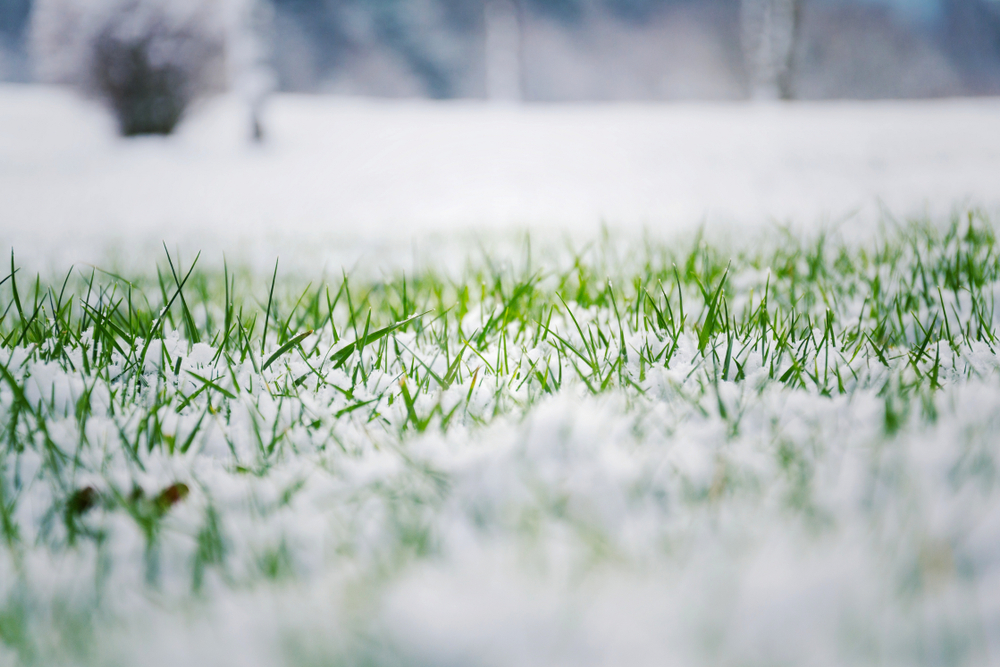
Winter in Alberta can be tough on lawns. Snow, ice, freezing temperatures, and high winds all take a toll on your grass. But there are steps you can take to protect your lawn, ensuring it emerges healthy and vibrant come spring.
You should have completed the following steps by now to help prep your lawn to withstand winter’s harsh effects:
1. Aerate Before the Snow Falls
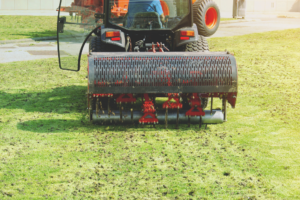 Aerating your lawn in the fall, just before winter, helps it breathe and absorb more nutrients. Aeration opens up the soil, letting air, water, and nutrients reach the grassroots. This preps your lawn to store essential nutrients over the winter, making it more resilient when temperatures drop. Deep core aeration is recommended once per year in the spring or fall. If you haven’t aerated lately, then learn about our Core Aeration service here and consider booking it for spring.
Aerating your lawn in the fall, just before winter, helps it breathe and absorb more nutrients. Aeration opens up the soil, letting air, water, and nutrients reach the grassroots. This preps your lawn to store essential nutrients over the winter, making it more resilient when temperatures drop. Deep core aeration is recommended once per year in the spring or fall. If you haven’t aerated lately, then learn about our Core Aeration service here and consider booking it for spring.
2. Give Your Lawn a Final Mow
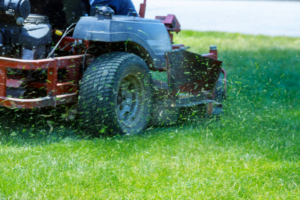 One last trim before winter helps prevent diseases and mold from forming under the snow. Set your mower to a lower setting than usual—about 2 inches high—and mow as late into the season as possible to avoid leaving your grass too long. Long grass can bend and mat under snow, creating a breeding ground for snow mold, while grass cut too short might weaken and struggle in the spring.
One last trim before winter helps prevent diseases and mold from forming under the snow. Set your mower to a lower setting than usual—about 2 inches high—and mow as late into the season as possible to avoid leaving your grass too long. Long grass can bend and mat under snow, creating a breeding ground for snow mold, while grass cut too short might weaken and struggle in the spring.
3. Spread a Winter-Ready Fertilizer
 Applying a winterizing fertilizer provides your grass with a nutrient boost to store over the winter. Choose a fertilizer with a high potassium content, as potassium strengthens roots and increases your lawn’s ability to withstand cold temperatures. Our lawn care experts custom mix our fertilizer depending on the season to make sure your lawn gets what it needs to survive and thrive each season. We have been specializing in weed control and lawn fertilization since 1992. Learn more about these services here.
Applying a winterizing fertilizer provides your grass with a nutrient boost to store over the winter. Choose a fertilizer with a high potassium content, as potassium strengthens roots and increases your lawn’s ability to withstand cold temperatures. Our lawn care experts custom mix our fertilizer depending on the season to make sure your lawn gets what it needs to survive and thrive each season. We have been specializing in weed control and lawn fertilization since 1992. Learn more about these services here.
If you haven’t completed the following, then there is still time to do these things before the snow flies and blankets our lawns:
4. Clear Off Debris and Furniture
 Any debris, outdoor furniture, or yard toys left on your lawn can smother the grass under heavy snow. When left covered, these areas can develop patches of weak or dead grass by spring. Clear your lawn before snowfall to prevent these problem areas from forming.
Any debris, outdoor furniture, or yard toys left on your lawn can smother the grass under heavy snow. When left covered, these areas can develop patches of weak or dead grass by spring. Clear your lawn before snowfall to prevent these problem areas from forming.
5. Avoid Excessive Foot Traffic
 After snow falls, it’s best to avoid excessive walking on your lawn. Frozen grass is vulnerable to breakage, and repetitive foot traffic can damage grass blades and roots. If you need to use the lawn as a pathway, consider placing stepping stones or temporary walkways to help prevent grass damage.
After snow falls, it’s best to avoid excessive walking on your lawn. Frozen grass is vulnerable to breakage, and repetitive foot traffic can damage grass blades and roots. If you need to use the lawn as a pathway, consider placing stepping stones or temporary walkways to help prevent grass damage.
6. Clear Snow Carefully
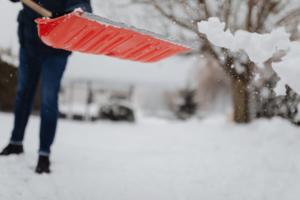 When shoveling snow, avoid piling it on the lawn. Large snow piles take longer to melt, keeping the grass wet and more prone to mold or rot. Gently remove snow from your lawn area to promote even thawing in spring, or let our snow removal team help with proper snow clearance around your property. For the winter 2024 /2025 season we are servicing the following areas in Central Alberta: Blackfalds, Penhold, Red Deer, Springbrook and Sylvan Lake. We are still taking bookings for the upcoming snow season. Learn more about our Snow Removal Services here.
When shoveling snow, avoid piling it on the lawn. Large snow piles take longer to melt, keeping the grass wet and more prone to mold or rot. Gently remove snow from your lawn area to promote even thawing in spring, or let our snow removal team help with proper snow clearance around your property. For the winter 2024 /2025 season we are servicing the following areas in Central Alberta: Blackfalds, Penhold, Red Deer, Springbrook and Sylvan Lake. We are still taking bookings for the upcoming snow season. Learn more about our Snow Removal Services here.
7. Consider Snow Mold Protection
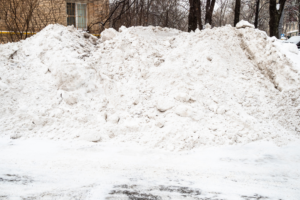 Snow mold, a fungal disease that thrives in the damp, cool conditions under melting snow, is a common issue in spring. To prevent it, keep your grass mowed at the right height and avoid piling snow onto your lawn. You can also apply a preventative fungicide in late fall, though proper winter prep steps are often enough to keep snow mold at bay.
Snow mold, a fungal disease that thrives in the damp, cool conditions under melting snow, is a common issue in spring. To prevent it, keep your grass mowed at the right height and avoid piling snow onto your lawn. You can also apply a preventative fungicide in late fall, though proper winter prep steps are often enough to keep snow mold at bay.
Final Thoughts
Winter is harsh, but by following these steps, you’ll give your lawn the best chance to survive and thrive. A little effort before winter can lead to a lush, green lawn come spring.
If you have any questions or concerns about your lawn, please feel free to contact our team of lawn care professionals in Calgary or Red Deer and they’d be happy to help answer any questions that you may have.

Recent Comments